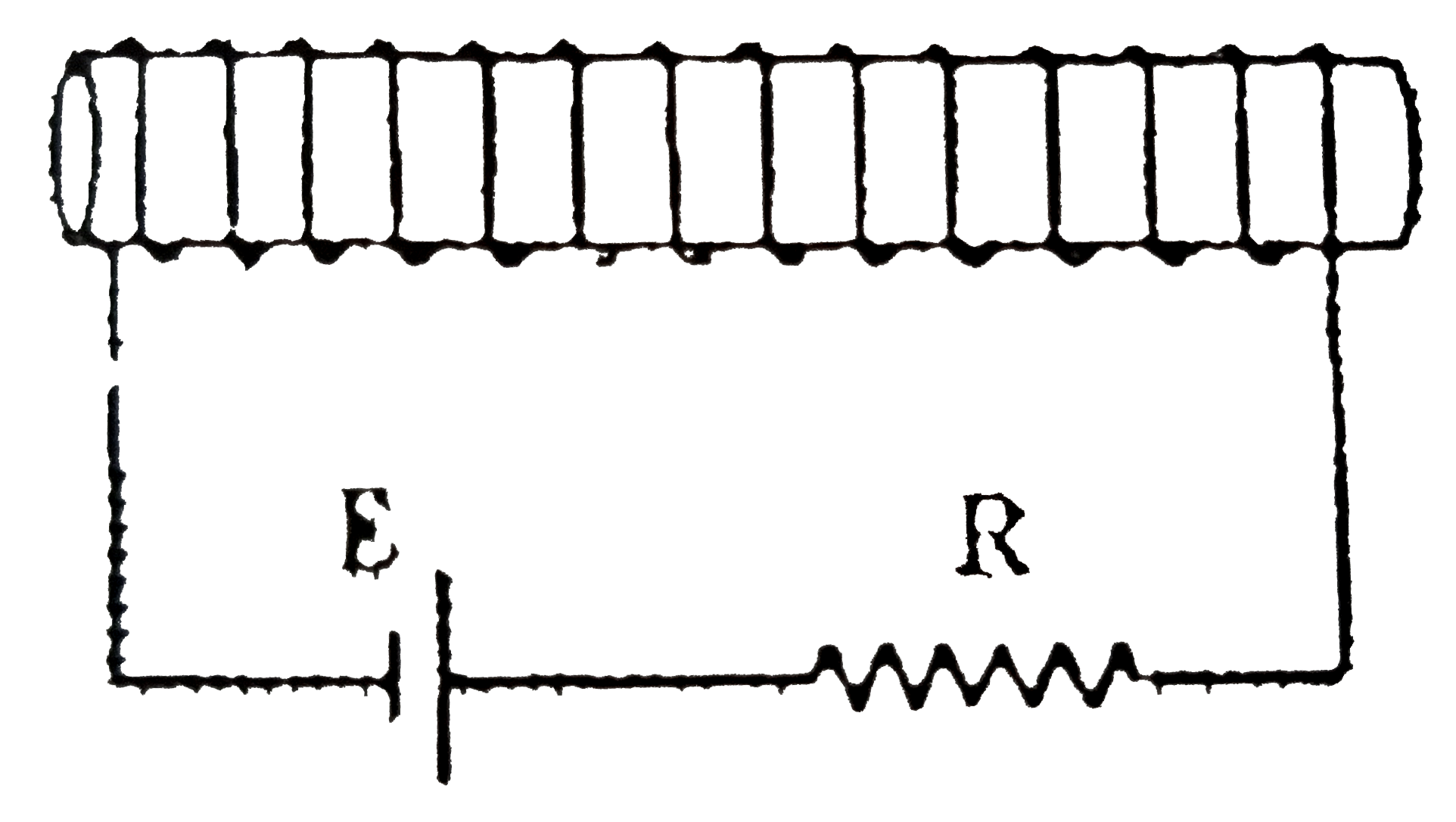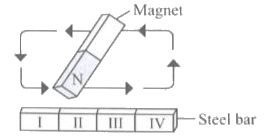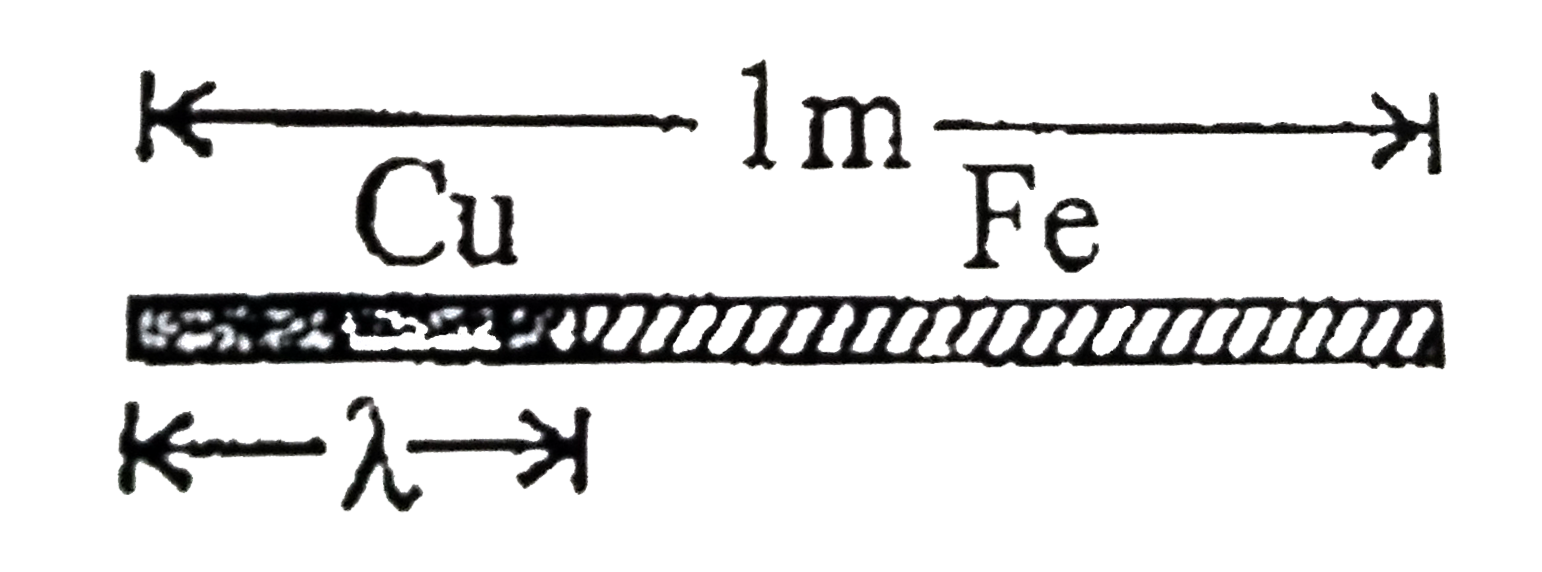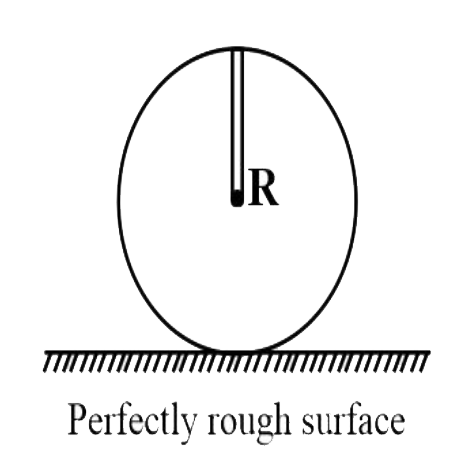Ashwini magnetised a piece of iron rod using the stroking method as shown in the diagram.

Which part of the iron rod becomes the north-seeking pole ?
P
Q
R
S
The correct Answer is:B
Q becomes the North pole and R, where the rubbing magnet is lifted becomes the South pole.
Topper's Solved these Questions
- FUN WITH MAGNETS BOOK - SCIENCE OLYMPIAD FOUNDATION CHAPTER - FUN WITH MAGNETS EXERCISE - ACHIEVERS SECTION (HOTS)
5 Videos
- ELECTRICITY AND CIRCUITS BOOK - SCIENCE OLYMPIAD FOUNDATION CHAPTER - ELECTRICITY AND CIRCUITS EXERCISE - ACHIEVERS SECTION (HOTS)
5 Videos
- LIGHT, SHADOWS AND REFLECTIONS BOOK - SCIENCE OLYMPIAD FOUNDATION CHAPTER - LIGHT, SHADOWS AND REFLECTIONS EXERCISE - ACHIEVERS SECTION (HOTS)
5 Videos
Similar Questions
When one end of an iron rod is heated, its other end also becomes hot soon. Name the process by which heat flows in the iron rod
View SolutionAn iron core solenoid of length l and cross-sectional area A having N turns on it is connected to a battery through a resistance as shown in the figure. At instant t=0, the iron rod of permeability μ from the core is abruptly removed. Find the current as a function of time.

View Solution
Knowledge Check
A student used the stroking method to magnetise a steel bar as shown in the figure.

If the steel bar was divided into parts I, II, III and IV, which of these parts would be the north-pole?AIBIICIIIDIVStatement I: An eletric lamp is connected in series with a long solenoid of copper with air core and then connected to an ac source. If an iron rod is inserted in the solenoid, the lamp will become dim.
Satement II: If an iron rod is inserted in the solenoid, the inductance of the solenoid increases.AStatement I is True, Statement II is True, Statement II is the correct explanation for Statement I.BStatement I is True, Statement II is True, Statement II is NOT the correct explanation for Statement I.CStatement I is True, Statement II is False.DStatement I is False, Statement II is True.A meter-scale is made of copper and iron rods as shown in the figure. If the length of copper rod is λ meter and the coefficients of linear expansion of copper and iron are a1 and a2 respectively, then the equvalent coefficient of linear expansin of the combined material of the meter-scale is
 Aλa1+a2λ+1Ba1+λa2λ+1C√λa1a2Dλa1+(1−λ)a2
Aλa1+a2λ+1Ba1+λa2λ+1C√λa1a2Dλa1+(1−λ)a2
Consider two rods of equal cross - sectionai area A, one of Aluminium and other of iron joined end to end as shown in figure -4.8. Length of the two rods and their thermal coductivities are l1,k1and l2,k2 respectively . If the ends of the rods are maintained at temperature T1 and T2,(T1>T2) find the temperature of the junction in steady state .

View SolutionA small aluminium rod AB is suspended horizontally from a stand by the ends of two connecting wires as shown in the Figure given here. A horseshoe magnet is placed in such a way that north pole of the magnet is vertically below and its south pole vertically above the aluminium rod. The aluminium rod is connected in series with a battery, a key and a rheostat. How do you think the displacement of rod AB will be affected if :
(i) current in rod AB is increased ?
(ii) a stronger horseshoe magnet is used ?
(iii) length of the rod AB is increased ?

View SolutionIn a diagram shown, a rod of mass M has been fixed on a ring of the same mass. The whole system has been placed on a perfectly rough surface. The system is gently displaced so that the ring starts rolling. The velocity of the centre of the ring when the rod becomes horizontal is (the length of the rod is equal to the radius of the ring)

View SolutionAssertion (A) : An electric lamp is connected in series with a long solenoid of copper with air core and then connected to AC source. If an iron rod is inserted in solenoid the lamp will become dim.
Reason (R ) : If iron rod is inserted in solenoid, the induction of solenoid increases.
View SolutionTwo rods of copper and iron with the same cross sectional area are joined at S and a steady current i flows through the rods as shown in the figure

Choose the most appropriate representation of charges accumulated near the junction S.
View Solution
